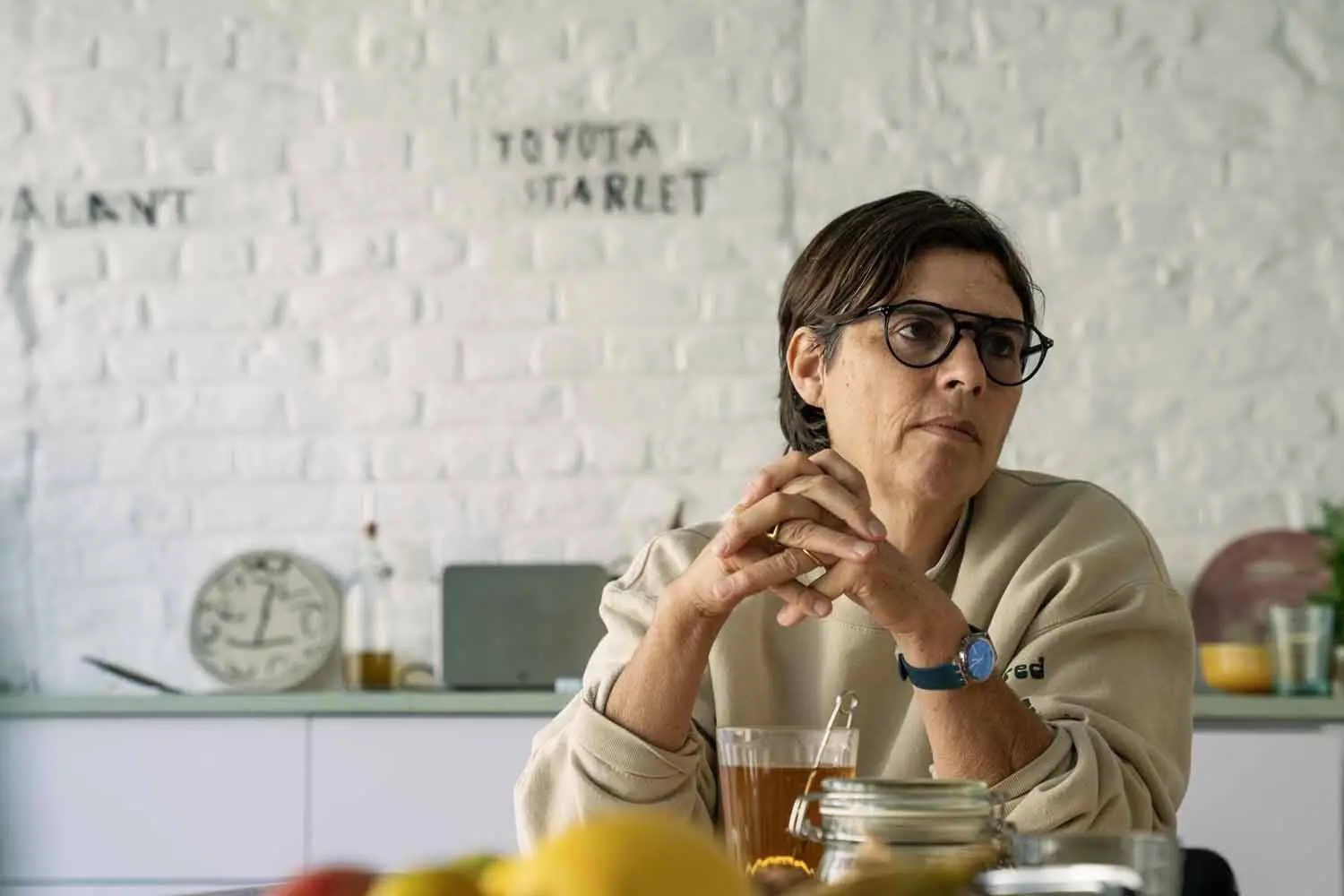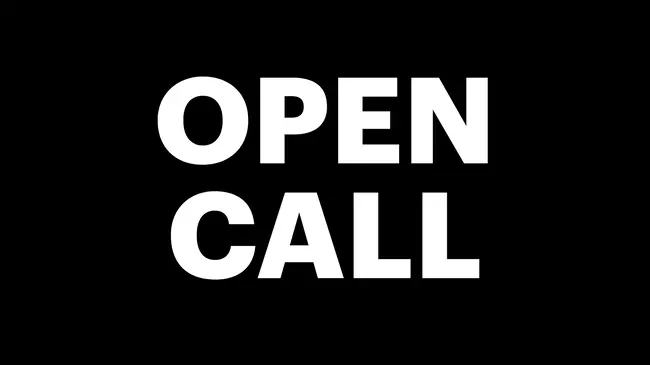Building a Collective Practice: Jessica Gysel on the Power of Manifestos

Girls Like Us founder and editor Jessica Gysel invited us to her home, where she shared some of the experiences and texts that shape her practice. The magazine’s newest publication, 'Love and Lightning' – co-published with VALIZ, a Dutch publisher – collects a century of queer and feminist manifestos and will be presented at this year’s Kanal-Centre Pompidou’s Brussels Ass Book Fair. As part of the fair’s public reading programme, Jessica joins Sara Kaaman and Katja Mater in reactivating these manifestos as tools for collective practice, inviting readers to explore what still resonates today.
Girls Like Us has been around for 20 years now. How has your vision for the magazine evolved over time, especially as conversations around queer and feminist issues have changed?
I get this question a lot because when we started, there was almost no visibility for queer women. We were claiming space for ourselves and creating visibility. Over the years, though, notions of gender changed. At one point, we opened the magazine to anyone who identified as female, but that felt too binary. Eventually, we opened the magazine to a more fluid spectrum of gender and non-binaries. In a way, the magazine evolved along with the current times.
I remember interviewing older activists early on and asking them if they consider themselves feminists – many said ‘no, never’, almost as if it were a dirty word. That shifted by the late 2000s, when younger generations reclaimed the word and redefined it. It’s been interesting to watch things evolve and to see people now referencing our early issues as archival material.
<img class="editorial-image-50-left" src="https://cdn.prod.website-files.com/61eebcc683107b99137f4423/690c95d16b24d4706d50ee12_14.avif"/>
<img class="editorial-image-50-right" src="https://cdn.prod.website-files.com/61eebcc683107b99137f4423/690c95d17ba2a288be086390_12.avif"/>
What sparked the idea for Love and Lightning, and how did you curate the voices included?
I got the idea after seeing 100 Artist Manifestos, published by Penguin around 2012. I remember thinking it was crazy that there were 99 manifestos written by men and only one by a woman. That’s when I started collecting manifestos myself.
It took a considerable amount of time to develop this. We began working on it in 2018, but then Covid disrupted everything. Eventually, I contacted VALIZ, the publisher, and they brought in Sarah van Binsbergen, who did the final edit of all the material, and voilà. It became a truly collective effort. Queer and feminist projects often take longer because we get less funding and resources – and the process of this book reflects that. It was slow, challenging, but collaborative. Of course, we didn't write the manifestos, so we had to get permission to publish all of this material. That came with challenges because some of the authors are no longer alive, and certain manifestos belong to prestigious university presses, which can be expensive to reproduce. The book ultimately brings together voices from different generations and geographies.
<img class="editorial-image-50-left" src="https://cdn.prod.website-files.com/61eebcc683107b99137f4423/690c95d0c569a7bbb82f41cd_8.avif"/>
<img class="editorial-image-50-right" src="https://cdn.prod.website-files.com/61eebcc683107b99137f4423/690c95cfcbfefef1e9d03148_2.avif"/>
A manifesto is often bold and politically charged. What kind of energy or call to action do you hope readers will take from this book?
A manifesto can come in different forms and writing styles, but the intention is the most important thing about it – putting something on paper that you truly believe in. It’s a great exercise for organising your ideas and channelling frustrations into something constructive. Some of these texts are rants, others are way more utopian, and some are more practical. So there is something for everyone seeking change.
A manifesto can come in different forms and writing styles, but the intention is the most important thing about it – putting something on paper that you truly believe in
I hope that readers can feel inspired to make their own manifestos or take action in their own ways. There are numerous tools in manifestos that people can utilise, especially in light of the current crises, such as gender inequality, war, and climate change. It's queer and feminist, so it includes voices from the margins, which offer a completely different social narrative from the dominant hetero-patriarchal white perspective, which has caused a lot of harm. These voices share a different set of ideas with a lot of care, which I think we really need.
<img class="editorial-image" src="https://cdn.prod.website-files.com/61eebcc683107b99137f4423/690c95d1e8b404bf075966c2_13.avif"/>
What do you value most about fairs like Kanal’s Brussels Ass Book Fair? How do they serve independent and queer publishing differently from more mainstream platforms?
We've been doing many book fairs with Girls Like Us. We were a part of the New York Art Book Fair from the beginning, which I think is the mothership of queer-oriented fairs. It has a lot of participants, but at its core, it was founded by queer people working at Printed Matter in New York.
You meet your readers, and you feel like you're not alone
These fairs are great because you get to know other people, you meet publishers, you meet your readers, and you feel like you're not alone. Your publication lives somewhere, but at a fair, there are people coming to the table, buying other issues, and we get to have a conversation. It’s also economically quite nice; we get to sell directly to the readers without going through a distributor.
I love real-life gatherings. Publishing can be solitary; you're often working on it by yourself or with a group of people, so it's important to go outside and have those exchanges. And at this book fair, it’s not only queer audiences that visit, so it's nice to meet all kinds of people.
<img class="editorial-image-50-left" src="https://cdn.prod.website-files.com/61eebcc683107b99137f4423/690c95d03153dd4be3dbd522_10.avif"/>
<img class="editorial-image-50-right" src="https://cdn.prod.website-files.com/61eebcc683107b99137f4423/690c95d0f73ec99123383042_5.avif"/>
It's really precious to have printed publications nowadays. Is Girls Like Us committed to continuing with print?
Print is important in many ways, especially for small publishers from the margins. Of course, not everything needs to be printed, but for us, the look and feel of a publication is part of the message. There is a lot of effort in coming up with choices of illustrations, fonts and more. I like the tactility of it. I imagine a book lying somewhere, maybe it ends up in a living room or a toilet, and someone picks it up and reads a few pages.
Print can coexist with digital, but if it's done with care, it has a lasting importance. It’s also exciting to see a revival of zine and book fairs, so there’s a demand for print.
<img class="editorial-image-50-left" src="https://cdn.prod.website-files.com/61eebcc683107b99137f4423/690c95d0626f3b1c2dc7c0a3_9%20copy.avif"/>
<img class="editorial-image-50-right" src="https://cdn.prod.website-files.com/61eebcc683107b99137f4423/690c95cf3f8a09221103f386_7.avif"/>
What is something you’ve read, watched or experienced recently that really stayed with you?
The material emerging around Palestine and the genocide taking place has taught me a lot about how to organise and how to break away from white perspectives. I think there are a lot of links between the queer struggle and the Palestinian struggle.
I think reading is a form of resistance
We have one manifesto in the book called The Queer Nation Manifesto from the early 1990s, which was the first to claim and define the word ‘queer’. We sometimes read it together. As part of the public programme at Brussels Ass Book Fair, we’ll come together in a circle with a group of people and take turns reading this manifesto. It’s refreshing to revisit an old text and see what still resonates. I think reading is a form of resistance, it’s super powerful and engaging – I love it! It is not activism per se, but there is an activity around these books and printed matter.
<img class="editorial-image" src="https://cdn.prod.website-files.com/61eebcc683107b99137f4423/690c95d0d2dc820d2b703ce9_11.avif"/>
<div class="editorial-banner"> <div class=“editorial-credits”>@girlslikeusmagazine<br><br>@brussels.assbookfair<br>Fair dedicated to artist books, books about art and publications of all kinds.<br>28 – 30.11.2025<br>@kanal.centrepompidou</div></div>
Different Class works with the interest of their community at heart.
Our work’s purpose is to foster a solid network for independent artists, those who love them, and those who want to support them. Become a member to contribute to the local Belgian art scene.





